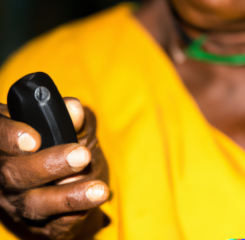RAI Manual Revision
CMS published an errata document for the RAI Manual in February concerning coding the Pain interview and staff assessment in Section J0300-J0850. When a resident meets criteria for having the interview conducted, it must be done no later than the assessment reference date (ARD). If the interview is not done, we may not substitute the staff assessment. Coding tip #2 was added to the RAI Manual and effective 10/01/2018. The coding tip is as follows:
If the resident interview should have been conducted but was not done within the look-back period of the ARD (except when an interpreter is needed/requested and unavailable), item J0200 must be coded 1, Yes, and the standard “no information” code (a dash “-“) entered in the resident interview items J0200-J0600. Item J0700, Should the Staff Assessment for Pain be Conducted, is coded 0, No.
However, the data specifications do not allow J0700 to be coded 0, No, in this case. Currently, the MDSC must also place a dash in J0700. Beginning October 1, 2019, the data specs will be corrected to allow “0, No” to be coded in J0700 when the interview must be dashed because it was not conducted.
In Chapter 3, page J-5, under “Steps for Assessment” in J0200: Should Pain Assessment Interview Be Conducted?, the skip pattern reference in the second step is corrected as follows:
Determine whether or not the resident is rarely/never understood verbally, in writing, or using another method. If the resident is rarely/never understood, skip to item J1100, Shortness of Breath J0800, Indicators of Pain or Possible Pain.
It’s a great time to review why the pain interview is part of the MDS assessment from page J-4:
Health-related Quality of Life
- Most residents who are capable of communicating can answer questions about how they feel.
- Obtaining information about pain directly from the resident, sometimes called “hearing the resident’s voice,” is more reliable and accurate than observation alone for identifying pain.
- If a resident cannot communicate (e.g. verbal, gesture, written), then staff observations for pain behavior (J0800 and J0850) will be used.
Planning for Care
- Interview allows the resident’s voice to be reflected in the care plan.
- Information about pain that comes directly from the resident provides symptom-specific information for individualized care planning.
In discussing the staff assessment for pain on page J-6, there are additional coding tips:
- The effects of unrelieved pain impact the individual in terms of functional decline, complications of immobility, skin breakdown and infections.
- Pain significantly adversely affects a person’s quality of life and is tightly linked to depression, diminished self-confidence and self-esteem, as well as an increase in behavior problems, particularly for cognitively-impaired residents.
- Some older adults limit their activities in order to avoid having pain. Their report of lower pain frequency may reflect their avoidance of activity more than it reflects adequate pain management.
The MDS 3.0 Pain Assessment Interview
The Pain Assessment Interview in item Section J of the MDS is only five short questions. It is by no means a comprehensive pain assessment. For starters, we don’t ask where it hurts or what makes it better. But it does represent a major leap forward from the MDS 2.0 method of assessing the resident and checking blocks if the assessor believes the resident feels pain. In this interview, the resident’s voice is all that matters. The assessor has been removed as a potential gatekeeper. It is the interview only that is used for both short- and long-stay Quality Measures concerning pain: “Percent of Residents Who Self-Report Moderate to Severe Pain.”
It is recommended, but not required, that the pain interview be conducted on the ARD or the day prior to the ARD. It is acceptable to do it at any time in the five-day look-back period. The interview should be attempted if the resident is at least sometimes understood and has an interpreter, if needed. It is a standardized interview and must be read, word for word, each time it is conducted. This will ensure valid and reliable results throughout the facility and between interviews with the same resident.
J0300 Pain Presence: Ask the resident: “Have you had pain or hurting at any time in the last 5 days?” Check yes, no or unable to respond (includes nonsensical answers). If the resident says yes, or uses any other word for pain, like burning, aching, throbbing, etc., we are instructed to check yes and proceed with the interview. As with all interviews, we are to clarify if we are not clear on what the resident is trying to tell us. An example from page J-9 of the RAI manual helps to illuminate this point:
When asked about pain, Mr. T. responds, “No pain, but I have had a terrible burning sensation all down my leg.”
Coding: J0300 would be coded 1, yes. The assessor would proceed to Pain Frequency item (J0400). Rationale: Although Mr. T.’s initial response is “no,” the comments indicate that he has experienced pain (burning sensation) during the look-back period.
J0400 Pain Frequency: Ask the resident: “How much of the time have you experienced pain or hurting over the last 5 days?” The choices are: almost constantly, frequently, occasionally, rarely, or unable to answer. We are to present a cue card with the response items to assist the resident. If he or she is unable to choose between two options, we are to select the higher frequency. Of note, if the resident was unable to answer (or provides nonsensical answers) for one or both of these first two questions, we stop the interview and complete the staff assessment. On the flip side, if the resident answers “yes” to J0300 and gives a frequency in J0400, the pain interview is considered to be complete even if no other questions in the interview are answered.
J0500 Pain Effect on Function
J0500A: Ask the resident: “Over the past 5 days, has pain made it hard for you to sleep at night?” Record “no, yes or unable to answer” in the appropriate blocks.
J0500B: Ask the resident: “Over the past 5 days, have you limited your day-to-day activities because of pain?” Record answers as in J0500.
J0600 Pain Intensity: We have two choices here, either the numeric rating or verbal descriptor scale. The numeric rating scale is 0-10 with 0 being no pain and 10 being the worst pain you can imagine. The verbal descriptors are mild, moderate, severe, very severe/horrible or unable to answer. Show the resident a cue card for the scale being used. Use the same scale with the same resident on subsequent assessments. If using the numeric rating scale, say: “Please rate your worst pain over the last five days, with zero being no pain and ten being the worst pain you can imagine” while showing the scale. If using the verbal descriptor scale, say: “Please rate your worst pain over the last five days” while showing the scale. We are not to try to talk a resident out of an answer or disagree with the intensity. We just write down what they say.
This pain interview must be conducted word for word, exactly as it is written, but it is just the beginning of a meaningful assessment. Appendix PP of the State Operations Manual (F-309) has this to say about our obligation to assess pain:
Observing the resident during care, activities, and treatments helps not only to detect whether the pain is present, but also to potentially identify its location and the limitations it places on the resident. The facility must complete the Resident Assessment Instrument (RAI) (See 42 CFR 483.20 F272). According to the CMS Long-Term Care Facility Resident Assessment Instrument User’s Manual, Version 3.0, Chapter 1, “Good clinical practice is an expectation of CMS. As such, it is important to note that completion of the MDS does not remove a nursing home’s responsibility to document a more detailed assessment of particular issues relevant for a resident . . .documentation that contributes to identification and communication of residents’ problems, needs and strengths, that monitors their condition on an on-going basis and that records treatment and response to treatment is a matter of good clinical practice and is an expectation of trained and licensed health care professionals.”
An assessment or an evaluation of pain based on clinical standards of practice may necessitate gathering the following information, as applicable to the resident:
- History of pain and its treatment (including non-pharmacological and pharmacological treatment).
- Characteristics of pain, such as:
- Intensity of pain (e.g., as measured on a standardized pain scale).
- Descriptors of pain (e.g., burning, stabbing, tingling, aching).
- Pattern of pain (e.g., constant or intermittent).
- Location and radiation of pain.
- Frequency, timing and duration of pain.
- Impact of pain on quality of life (e.g., sleeping, functioning, appetite, and mood).
- Factors such as activities, care, or treatment that precipitate or exacerbate pain.
- Strategies and factors that reduce pain.
- Additional symptoms associated with pain (e.g., nausea, anxiety).
- Physical examination (may include the pain site, the nervous system, mobility and function, and physical, psychological and cognitive status).
- Current medical conditions and medications.
- The resident’s goals for pain management and his or her satisfaction with the current level of pain control.

Most Recommended
February 29, 2024
Say Yes to Lobby Day!
April 05, 2024
Cyberattack Updates: Change Healthcare Payment Platform
April 22, 2024
 Nursing Home Staffing Ratios: LeadingAge Is On the Case
Nursing Home Staffing Ratios: LeadingAge Is On the Case
March 27, 2024
 Colleagues on the Move, March 27, 2024
Colleagues on the Move, March 27, 2024
April 12, 2024
Improving Medicare Advantage
Recently Added
April 22, 2024
CAST Safety Technology Selection Tool Updated
April 22, 2024
CAST Members in the News
April 22, 2024
Mental Health Training for HUD Service Coordinators
April 19, 2024



